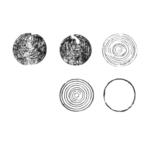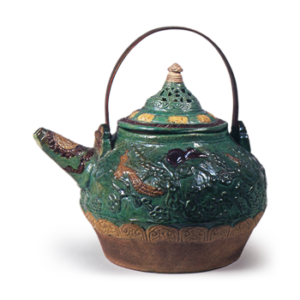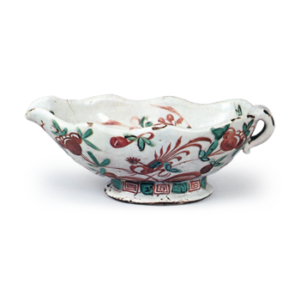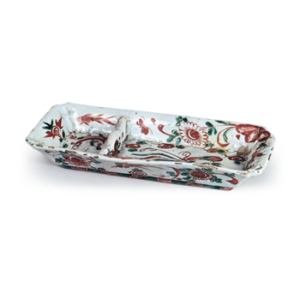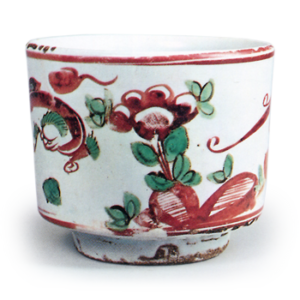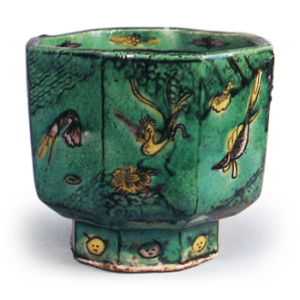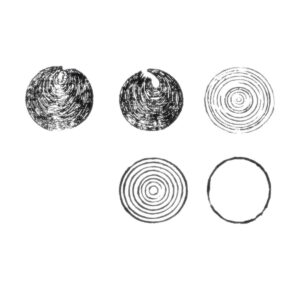
Itokiri” refers to the thin, spiral-shaped lines left behind by the twisted threads used to separate the product from the potter’s wheel during the water-grinding process. Straw is used in the old style, and mao is sometimes used for large vessels such as water jars and flower vases. The itokiri is a particularly noteworthy feature in the case of tea containers, and each type of potter’s wheel and the way it is used can reveal its own characteristics. When the potter’s wheel is used, the wheel is turned in the same direction as the hands of a clock, and the marks of the wheel are called “right thread cutting. In the case of the kick potter’s wheel, the wheel is usually turned in the same clockwise direction, so the thread cutting is also the same as on the hand wheel. However, in special regions, the wheel is turned in the left (reverse) direction, so the thread cutting is done on the left side of the wheel. Left itokiri is a rare example in Japan, and is not found in large pottery regions. In the case of tea containers, taking Seto and Karamono tea masters as examples, the Japanese potter’s wheel is considered to be a hand wheel with forward thread cutting and the Chinese wheel is considered to be a leg wheel with reverse thread cutting, and the distinction is made between Japanese and Chinese by the order and reverse of thread cutting. In the “Chawaniki Bengokushu,” under the article “Itokiri-no-Yojikata,” the following explanation is given, showing the diagram of the Jiede. The “round thread cutter” is a wheel with a wheel eye on the upper part of the thread cutter. The thread cutter of Seto ware is made in this way. The left-hand turn of the karamono thread cutter is a habit of karamono ware, and it is safe to be used for other tea containers. The bottom of the tea caddy is made in this manner, and the base of the tea caddy is placed on top of the handles. The bottom of the tea caddy is made in this way, and it is called “hara-kiki” or “ita-kiki”, and it is placed on the base of the tea caddy, so it is a must-see item. The bottom of the tea caddy is rounded, or “todo” or “koku-do”, and the bottom of the tea caddy is thinly made, or “zumamisoko”. The term simply “itokiri” refers to the right side of a tea container, which is called the right side of a tea container, i.e., Japanese-style hon-itokiri or jun-itokiri. Karamono-itokiri is the left side of itokiri, which is the reverse side of itokiri in the foreign style. The reason why I have listed other types of vessels that are not officially called “itokiri” is because the bottom of the vessel is referred to as a thread. In Japan, the first time that itokiri marks were found on Sue ware was in the 8th century, but in China, they are already found on black pottery of the Longshan culture. In archaeology, a distinction is made between those cut with a thread after the potter’s wheel had stopped rotating (static thread cutting) and those cut using rotation (rotary thread cutting). In Sue vessels as well as in the Minoan pottery of Crete, stationary thread cutting precedes the rotary thread cutting technique. For archaeological descriptions, see the sections on Sue ware and pottery production methods.

